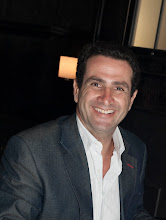 The Great Barrier Reef and Beyond
The Great Barrier Reef and Beyond
Great Barrier Marine Park Authority/Reuters
new_york_times :http://travel.nytimes.com/2008/03/26/travel/26greatbarrier.html
By JONATHAN GLATER
EVERY morning, starting around 7, small groups of sleepy tourists toting towels and oddly shaped nylon satchels appear on the beachfront main street in the small town of Palm Cove on Australia’s northeast coast. This is the mundane beginning of a day trip to the Great Barrier Reef.
Buses and minivans drop visitors off at boats of all types: sleek hydrofoils, battered fishing boats and sailboats loaded down with Champagne for the ride over the warm Pacific waves to the reef. The trip, from winding shoreline bus ride to a jump in the water, can take two hours or more.
Once you are in the water, though, the rewards are immediate: multicolored fish, sea turtles, a pair of reef sharks effortlessly patrolling above the coral and a stingray gliding above the sand on invisible currents.
There are plenty of companies that operate boats out to the reef, at all levels of luxury. At upscale hotels like the Sheraton Mirage Port Douglas Hotel or the Sea Temple Resort & Spa in Palm Cove, the concierge will arrange early-morning pickups. Most tour operators provide some kind of lunch and will rent scuba or snorkel gear, including wetsuits.
On a visit to Australia last June, my wife, Jen, and I went with Poseidon, a Port Douglas-based tour operator recommended by our hotel, the Sebel Reef House & Spa in Palm Cove. After a comfortable 45-minute bus ride up the coast to Port Douglas, we boarded a 58-foot powerboat that would ferry us to the outer edge of the reef, an area known as Agincourt Ribbon Reefs.
On the boat ride, which was only occasionally bumpy, our chipper and irreverent guides (after all, they were Australian) provided a refresher course on scuba diving, then taught us hand signals to identify the sea creatures we might see: two hands linked at the thumbs and fluttering meant a ray, a hand vertical at the forehead was a shark, a hand at the forehead coupled with a thrust of the hips meant a very big shark, and so on.
Those who, like Jen, chose not to dive, even though the scuba leaders offered to take even first-timers underwater, strapped on fins and masks and swam on the surface, following another guide who pointed out sea turtles and various fish.
Although the reef may be the primary attraction for tourists visiting this part of Australia, there are others. After a full day out on the water and the bus ride back to the hotel, sitting with a cocktail overlooking the beach is a pleasant indulgence. In Palm Cove, about 20 nautical miles from the nearest reef, the NuNu offers a tasty vanilla ginger mojito and a Bellagio, made with Pimm’s No. 1, Campari, raspberry liqueur, Aperol and a little passion fruit. The food was pretty good, too, especially the tiger shrimp with spiced lentils.
There are several good restaurants up and down the coast, from Cairns where the big jets land from Sydney, Melbourne and other parts of Australia, up to Port Douglas, the harbor our diving trip had departed from. In Palm Cove, the restaurant at the Sebel Reef House offers an excellent sea scallop risotto. and, down the street opposite the beach, Casmar has a slightly more eclectic menu that includes dishes like seared baby octopus and chili salt squid. Sitting on the balcony over the street at Casmar and watching the sunset after a day of adventures was a fine way to wrap things up.
A stroll inland from Palm Cove’s oceanfront main drag, up and along the Captain Cook Highway, took us past the Outback Opal Mine, a self-styled museum and store selling all varieties of opals.
This part of Australia is also known for its high rain forests, both up the coast and inland from Port Douglas. We spent a day visiting parts of the rain forest in the Wooroonooran National Park, including the lovely Josephine Falls, with Sergio Simoncini, our guide from Wooroonooran Safaris.
The rain forest wraps around hills that are often shrouded in low clouds, and the trees grow close and thick. While the coast is warm and breezy, the air inland is thick, more humid, hanging heavy over the lush greenery. Were it not for the trails through the park, the rain forest would be an uninviting place. And we were glad of the insect repellant our guide provided.
Mr. Simoncini also took us to the Johnstone River Crocodile Farm, where we saw dozens of animals destined to become boots, as well as a few larger crocs locked up after they had attacked cattle or, in one case, a person. Fearless kangaroos and their slightly smaller relatives, wallabies, hopped up to us, hoping for handouts, as we wandered around the farm.




No comments:
Post a Comment